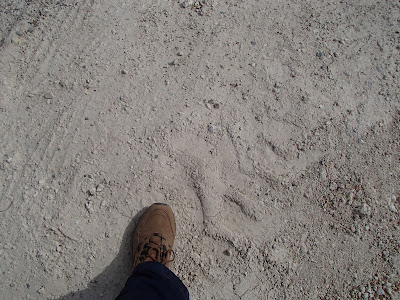Do you
have insurance? Companies selling insurance are betting you will not have a
problem. You, on the other hand, are betting you might. Fungicide use follows
the same reasoning. Fungicides, unlike most insecticides and weed killers
(herbicides) protect the new growth of plants and keep diseases from
starting or spreading. Because the disease doesn’t occur, you may not be
convinced it did any good.
We
collectively use the term “fungicide” to describe any pesticide aimed at
preventing a disease from fungi, bacteria, virus or mycoplasma like organisms
(MPO). Most diseases are caused by fungi but there are a few, like fire blight,
which are caused by bacteria and others like Ash yellows or Ash decline caused
by MPO’s.
Desert
climates like ours have a low humidity so plant diseases aren’t frequently seen
unless we do a poor job choosing plants for the wrong landscape spots,
planting, watering, or managing them. Agriculturally Las Vegas is isolated and
that also works in our favor. We have far fewer fruit and vegetable diseases
here than in agricultural hotspots.
What can
you do to prevent plant diseases? Clean and disinfect tools and equipment.
Whether you are doing it or someone else, make sure these tools are clean and
sanitized. Make sure supplies you are using are clean. Clean any used pots and
containers with bleach and let them air dry for 24 hours before reusing them. Don’t
compost diseased plant parts or reuse them. Instead, securely wrap them in
plastic and put them in the garbage. If the disease is known to be virulent
such as fireblight, get diseased plant parts off the property as soon as
possible. Thin out dense plants to improve air movement through their canopies.
Whether you are growing tomatoes, fruit trees or shrubs, when they are dense
they need to be thinned by selective pruning and growing vigorously to prevent
diseases.
Some diseases (biotic, coming from pathogens) I have found in the desert include:
Fireblight – Asian pears, European peers and apples and including many ornamental plants in the rose family including Pyracantha
Fireblight on Asian pear
Root rot and collar rot – many different fruit trees and ornamental trees and vegetables
Chokes the tree or plant at or beneath the soil because the soil is cold or too wet, poor drainage or all three
Ash decline – most ash trees
Limbs dying in established ash trees
Other suspected plant diseases probably encountered are: oleander leaf scorch, Pierces disease on grape, Verticillium wilt on vegetables and, Fusarium wilt on palms and vegetables, white rot on onion and garlic, summer patch on tall fescue, to name a few.
Always use sanitized equipment and sterile soil and containers when possible. By the way, my favorite sanitizer is alcohol after everything has been cleaned with soap and water.
















 A.
A. 

